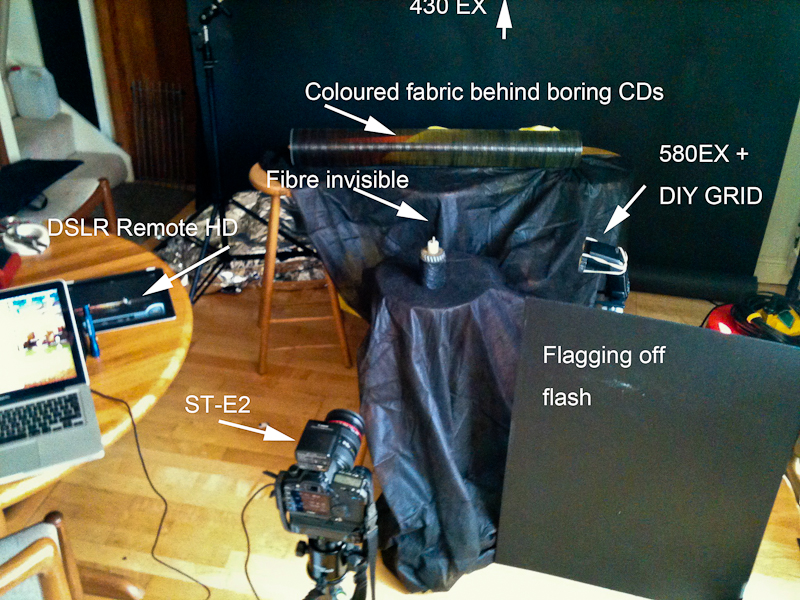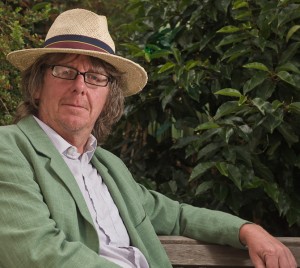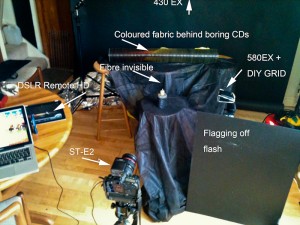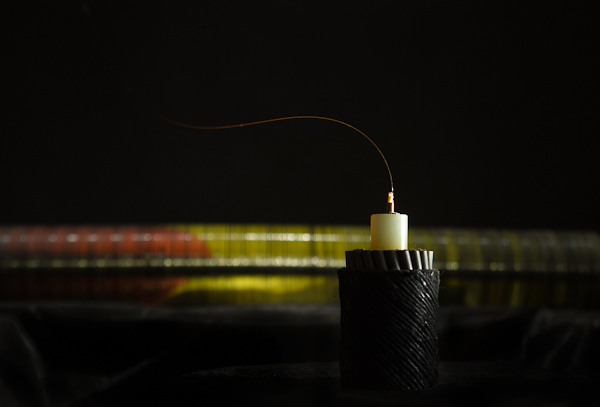
David Hobby (Strobist) is running a “Boot Camp” to take people out of their comfort zone in using small flashes to make photos of local significance. The exercise is as much about interacting with your community as the technicalities of the photographs produced, though to win the associated round prizes, the technicalities have to be good too.

The first exercise was to pick a locally prominent person and take their portrait. Fortunately Jono Forgham had just been elected chair of the Little Hadham Parish Council, and was in need of one… 2 off camera strobes — one in a softbox to camera right, and a warming low power fill from the left. The hat needed photoshopped to trim the broken straws round the edge :-), and a little attention was needed for reflections in his spectacles obscuring his right eye. Of course the exercise is really about getting things right in camera, but this is balanced by the sitter’s available time… You can see the Round 1 results HERE some pretty impressive s / dramatic shots.
Round 2 has been a bit more challenging:
For this assignment, you will be required to photograph a local object — something of significance to your community. As with the first, the most difficult part of the job will be deciding exactly what to shoot — and why
The problem is the plethora of things in the area, going right back yo Roman Empire times:
- Hadhamware Roman Pottery
- The sculptor Henry Moore lived and worked here, and the Henry Moor foundation is a major attraction.
- The local shared Roman/Anglican Church with it’s Henry Moore Stained Glass window
- The Forge Museum with Elizabethan Wall Paintings
- William Morris’ Cottage (Arts and Crafts Movement)
- Nettswell House birthplace of Cecil Rhodes and now the Cecil Rhodes Arts Centre
- United Distillers in Harlow, birthplace of “Bailey’s Irish Creme”
- Local Tomato producers, pioneers in the use of Bio-gas
- Smit-Klein-Beecham pharmaceuticals
- Standard Telephone Laboratories — birthplace of Optical Fibre Communications
Having worked at the Labs this last resonated most with me, and the problem was then to track down things to make up the shot — the labs had closed in he Nortel fiasco, I still had one of the two CD stacks I had dreamed up in 2000 to illustrate the data rate, but a bit of armoured cable was a more interesting proposition, as was some raw fibre…
A quick appeal by email rippled out, and came up with the goods.

As you will see The actual setup was fairly tight, with the flashes mostly overpowering the window light. It was a fun exercise to put all the ideas into practice that I had been reading. In particular it was interesting to see the benefits in using a flag to knock out the flare from out-of shot lights.
I tried different DoF settings, finally settling on one in which the slightly receding fibre faded to invisibility. This meant that the CDs were also completely out of focus, but they are really only saying ‘lots’ rather than being there to be counted.
As part of a story, I think I’ve made a good photo, particularly as I didn’t need to photoshop it at all. As with any non-domestic technology it requires explanation for the un-initiated. It is nonsense to expect a picture of the unfamiliar to stand on its own.


I’m really pleased – the photo made it to the final edit before choosing the final few, now if only I could do that more consistently.
Finalists here http://strobist.blogspot.com/2011/08/boot-camp-iii-assignment-2-results.html